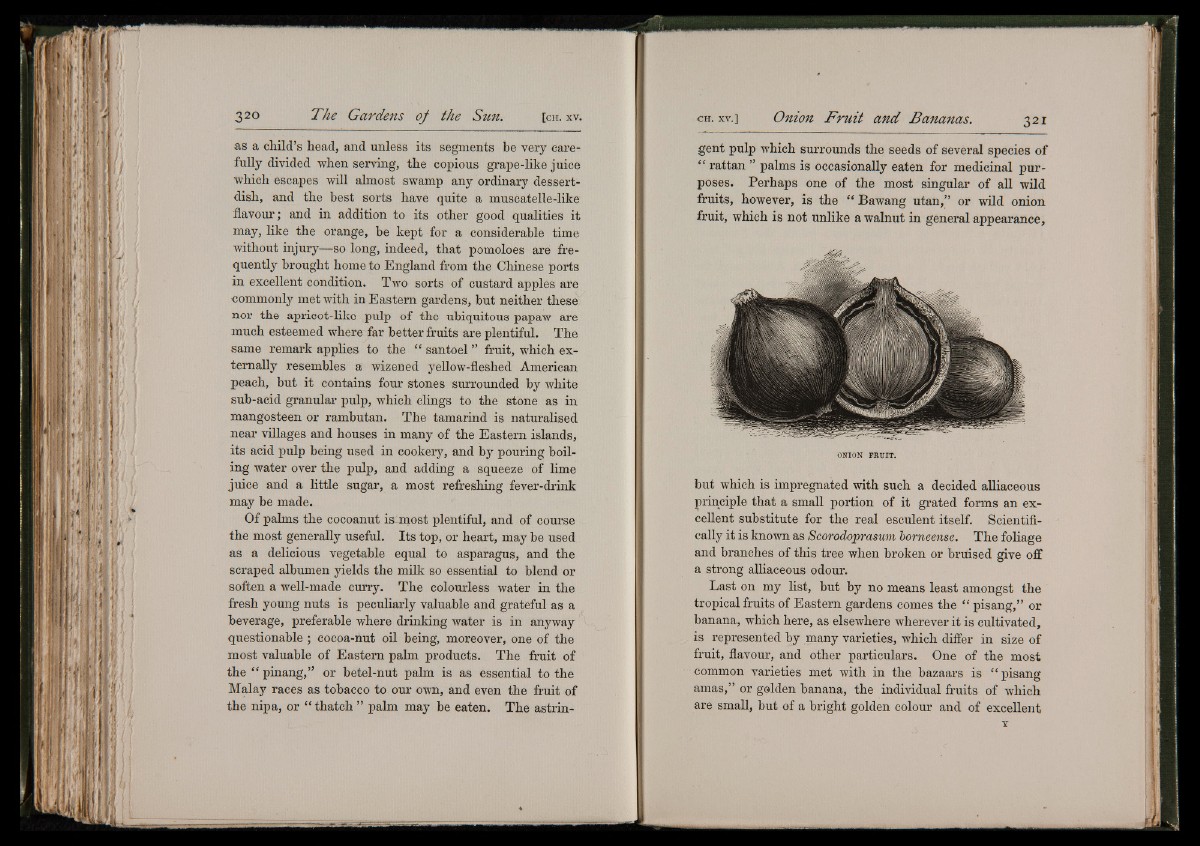
as a child’s head, and unless its segments be very carefully
divided when serving, the copious grape-like juice
which escapes will almost swamp any ordinary dessert-
dish, and the best sorts have quite a muscatelle-like
flavour; and in addition to its other good qualities it
may, like the orange, be kept for a considerable time
without injury—so long, indeed, that pomoloes are frequently
brought home to England from the Chinese ports
in excellent condition. Two sorts of custard apples are
commonly met with in Eastern gardens, but neither these
nor the apricot-like pulp of the ubiquitous papaw are
much esteemed where far better fruits are plentiful. The
same remark applies to the “ santoel ” fruit, which externally
resembles a wizened yellow-fleshed American
peach, but it contains four stones surrounded by white
sub-acid granular pulp, which clings to the stone as in
mangosteen or rambutan. The tamarind is naturalised
near villages and houses in many of the Eastern islands,
its acid pulp being used in cookery, and by pouring boiling
water over the pulp, and adding a squeeze of lime
juice and a little sugar, a most refreshing fever-drink
may he made.
Of palms the cocoanut is most plentiful, and of course
the most generally useful. Its top, or heart, may be used
as a delicious vegetable equal to asparagus, and the
scraped albumen yields the milk so essential to blend or
soften a well-made curry. The colourless water in the
fresh young nuts is peculiarly valuable and grateful as a
beverage, preferable where drinking water is in anyway
questionable ; cocoa-nut oil being, moreover, one of the
most valuable of Eastern palm products. The fruit of
the “ pinang,” or betel-nut palm is as essential to the
Malay races as tobacco to our own, and even the fruit of
the nip a, or “ thatch ” palm may be eaten. The astringent
pulp which surrounds the seeds of several species of
“ rattan ” palms is occasionally eaten for medicinal purposes.
Perhaps one of the most singular of all wild
fruits, however, is the “ Bawang utan,” or wild onion
fruit, which is not unlike a walnut in general appearance,
ONION FRUIT.
but which is impregnated with such a decided alliaceous
principle that a small portion of it grated forms an excellent
substitute for the real esculent itself. Scientifically
it is known as Scorodoprasum borneense. The foliage
and branches of this tree when broken or bruised give off
a strong alliaceous odour.
Last on my list, but by no means least amongst the
tropical fruits of Eastern gardens comes the “ pisang,” or
banana, which here, as elsewhere wherever it is cultivated,
is represented by many varieties, which differ in size of
fruit, flavour, and other particulars. One of the most
common varieties met with in the bazaars is “ pisang
amas,” or golden banana, the individual fruits of which
are small, but of a bright golden colour and of excellent